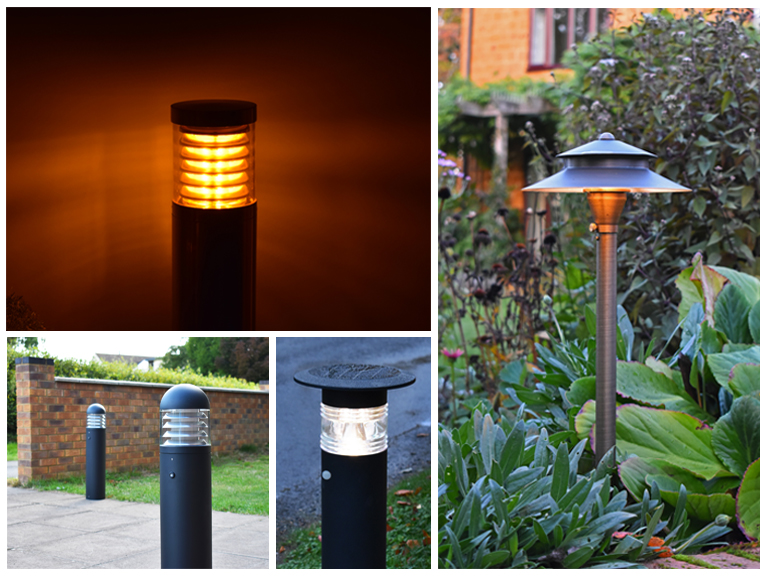Garden Lighting, Outdoor Lighting, Solar Lighting
Ways to Reduce Environmental Impact – Outdoor Lighting Design & Function
Outdoor Lighting that Reduces Environmental Impact
Installing outdoor lights in any location now carries the important responsibility to reduce environmental impact on natural surroundings and wildlife. After years of improvement, the professional luminaire specifications now fulfil both criteria of highly effective illumination, and less light pollution. Here’s what to look for in outdoor lighting that reduces environmental impact …
Go Solar
Solar lights are a greener, more sustainable solution to 240v (mains) lighting, using a renewable energy source, and slashing the expense of energy and installation bills. Look for improved technology such as monocrystalline solar panels and high capacity, long-life lithium-Ion / LiFePO4 batteries that retain charge efficiently. Certain ranges contain sophisticated in-built functions such as gradual dimming sequences from dusk to dawn.
Lumena Lights’ Pro-Solar Range and ViaMAX Solar Street Lights are guaranteed for up to 5 years and especially designed for UK weather, reliably illuminating for hours every night of the year. Over 4 years, the ranges have been successfully installed in larger gardens, public areas, hospitality venues, schools, and housing developments.
Pollution Solution
To avoid light pollution, low level ‘anti-glare’ LED fittings are preferred. Pools of directional light shine downwards and bright light is diverted away from eye-level. ‘Glare shields’ or louvres further reduce unnecessary light spillage. Glare shields don’t mean less brightness; simply controlled, directed illumination. Nocturnal animals such as bats rely on darkness to survive, thus the phrase “Bat friendly” outdoor lighting.
For illumination without dazzling, opt for spread lighting designs (Charleston), angled louvered bollards (Boleda Range) and adjustable spotlights.
Warm Glow
Previously, high output daylight white fittings (6000+ kelvins), were commonplace on larger-scale lighting installs. Due to blue light scattering via atmospheric particles, it is harsher on the eye and can have a negative influence on surroundings and wildlife, particularly bats. Studies show that colour temperatures of 2700-3000K, (warm white), result in much less distraction and disruption. Blue light deters bats which can result in them not feeding as they should, as some insects are attracted to blue light. Lumena stock many warm white Solar options as well as a brand new amber 240v LED lamp in ultra-warm 1800K – a great replacement for existing cool white LEDs.
Motion Sensors
A motion sensor (PIR / Microwave) controls fittings to illuminate when motion is detected but then dims or turns off when the area is clear. In comparison to constant lighting, this prevents light pollution and protects nocturnal wildlife from unnecessary artificial light. This also reduces energy consumption. Pair with solar to decrease your carbon footprint even further. Consider Lumena’s innovative, durable PIR path lights including both 240v and solar options.
Lumena offer solar samples at trade prices if you’d like to trial one on your project. Photometric data is available for many of their path light designs if required.


Comments are closed.